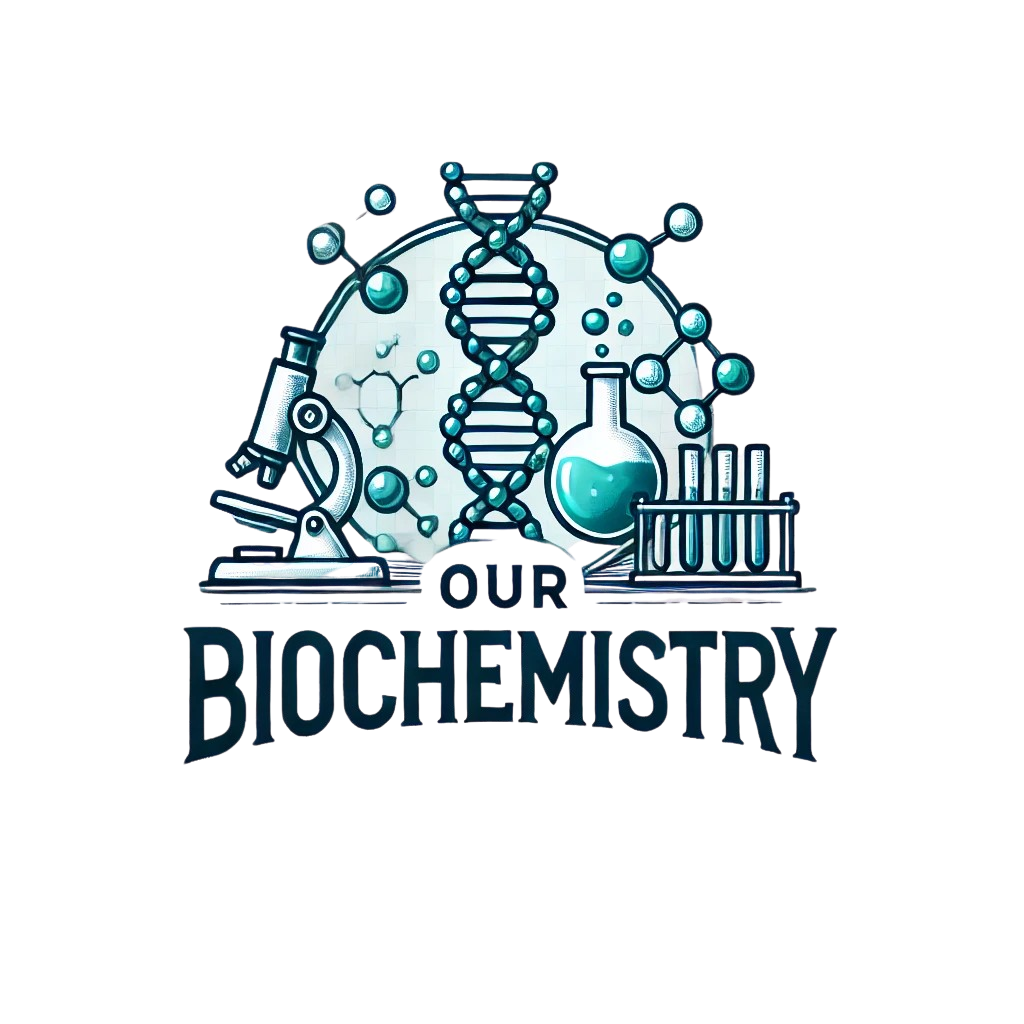Library
Steps of de novo synthesis of cholesterol
- March 21, 2020
- Posted by: Namrata Chhabra
- Category: Learning resources Lecture notes Library Metabolism of lipids Theory notes

Steps of de novo synthesis of cholesterol
Cholesterol is derived from diet, de novo synthesis, and the hydrolysis of cholesteryl esters. A little more than half the cholesterol in the body arises by synthesis (about 700 mg/d), and the average diet provides the remainder. The liver and intestine account for approximately 10% each of the total synthesis in humans. Virtually all tissues containing nucleated cells are capable of cholesterol synthesis, which occurs in the endoplasmic reticulum and the cytosol.
Acetyl CoA acts as a precursor of cholesterol. All the 27 carbon atoms of cholesterol are derived from Acetyl co A.
Steps of synthesis of cholesterol
The biosynthesis of cholesterol may be divided into five steps:
(1) Synthesis of mevalonate from acetyl-CoA
(2) Formation of isoprenoid units from mevalonate by loss of CO2
(3) Condensation of six isoprenoid units to form squalene.
(4) Cyclization of squalene to give rise to the parent steroid, lanosterol.
(5) Formation of cholesterol from lanosterol
Details of reactions
(1) Synthesis of mevalonate from acetyl-CoA –HMG-CoA (3-hydroxy-3-methylglutaryl-CoA) is formed by the reactions used in mitochondria to synthesize ketone bodies (figure-1). However, since cholesterol synthesis is extramitochondrial, the two pathways are distinct. Initially, two molecules of acetyl-CoA condense to form acetoacetyl-CoA catalyzed by cytosolic thiolase. Acetoacetyl-CoA condenses with a further molecule of acetyl-CoA catalyzed by HMG-CoA synthase to form HMG-CoA, which is reduced to mevalonate by NADPH catalyzed by HMG-CoA reductase. This is the principal regulatory step in the pathway of cholesterol synthesis and is the site of action of the most effective class of cholesterol-lowering drugs, the HMG-CoA reductase inhibitors (statins).
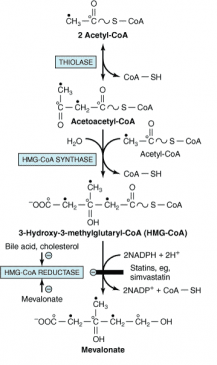
Figure-1- showing the formation of Mevalonate (stage-1 of cholesterol biosynthesis). The synthesis of mevalonate is the committed step in cholesterol formation. The enzyme catalyzing this irreversible step,3-hydroxy-3-methylglutaryl CoA reductase (HMG-CoA reductase), is an important control site in cholesterol biosynthesis.
Step 2—Formation of Isoprenoid Units: Mevalonate is phosphorylated sequentially by ATP by three kinases, and after decarboxylation (figure-2), the active isoprenoid unit, isopentenyl diphosphate, is formed.
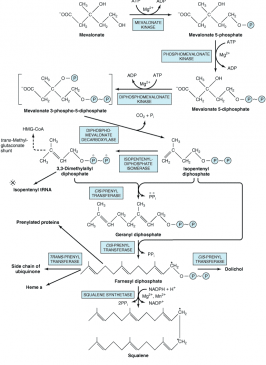
Figure-2- showing the formation of Squalene from Mevalonate
Step 3—Six Isoprenoid Units Form Squalene:
Squalene is synthesized from isopentenyl pyrophosphate by the reaction sequence-
![]()
Isopentenyl diphosphate is isomerized by a shift of the double bond to form dimethylallyl diphosphate, then condensed with another molecule of isopentenyl diphosphate to form the ten-carbon intermediate geranyl diphosphate (figure-3 and 4).

Figure-3- showing the conversion of IPP to Dimethyl Allyl pyrophosphate
A further condensation with isopentenyl diphosphate forms farnesyl diphosphate. Two molecules of farnesyl diphosphate condense at the diphosphate end to form squalene. Initially, inorganic pyrophosphate is eliminated, forming presqualene diphosphate, which is then reduced by NADPH with the elimination of a further inorganic pyrophosphate molecule.

Figure 4 showing the conversion of Farnesyl pyrophosphate to squalene
Step 4—Formation of Lanosterol: Squalene can fold into a structure that closely resembles the steroid nucleus (Figure). Before ring closure occurs, squalene is converted to squalene 2,3-epoxide by a mixed-function oxidase in the endoplasmic reticulum, squalene epoxidase. The methyl group on C14 is transferred to C13, and that on C8 to C14 as cyclization occurs, catalyzed by oxidosqualene: lanosterol cyclase.
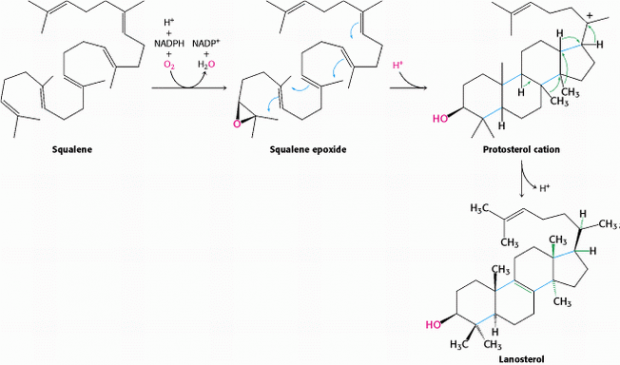
Figure-5- showing the formation of Lanosterol from Squalene.
Step 5—Formation of Cholesterol: The formation of cholesterol from lanosterol takes place in the membranes of the endoplasmic reticulum and involves changes in the steroid nucleus and side-chain (Figure). The methyl groups on C14 and C4 are removed to form 14-desmethyl lanosterol and then zymosterol. The double bond at C8–C9 is subsequently moved to C5–C6 in two steps, forming desmosterol. Finally, the double bond of the side chain is reduced, producing cholesterol. The exact order in which the steps described take place is not known with certainty.
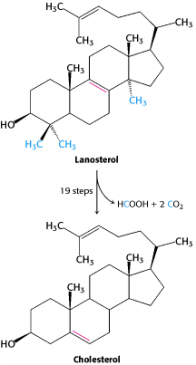
Figure-6- conversion of lanosterol to cholesterol
Significance of Farnesyl pyrophosphate-
1) The poly-isoprenoids dolichol is formed from farnesyl diphosphate by the further addition of up to 16 isopentenyl diphosphate residues
2) Ubiquinone is formed from farnesyl diphosphate by the addition of or 3–7 isopentenyl diphosphate residues, respectively.
2) Some GTP-binding proteins in the cell membrane are prenylated with farnesyl or geranyl (20 carbon) residues. Protein prenylation is believed to facilitate the anchoring of proteins into lipoid membranes and may also be involved in protein-protein interactions.
Author:Namrata Chhabra
Leave a Reply Cancel reply
You must be logged in to post a comment.
